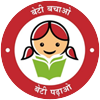अक्सर पूछे जाने वाले प्रश्न
Ans:- ‘Mission Shakti’, an Integrated Women Empowerment Programme, is the Umbrella Scheme for the Safety, Security and Empowerment of Women of the Government of India for implementation during the 15th Finance Commission period from 2021-22 to 2025-26. It aims at strengthening interventions for safety, security and empowerment of women in a mission mode through convergence and institutional mechanism.
Ans:- Mission Shakti seeks to realise the Government’s vision for ‘women-led development’ by addressing issues affecting women across the life-cycle continuum, while making them equal partners in nation-building through convergence across Ministries/ Departments and different levels of governance, greater participation and support of panchayati raj institutions and other local self governance bodies and Jan Sahabhagita, while also strengthening digital infrastructure for last mile tracking of service delivery.
Ans:- The broad objectives of the Mission are as under:
• To provide immediate and comprehensive continuum of care, support and assistance to women affected by violence and in distress;
• To put in place quality mechanisms for rescue, protection and rehabilitation of women in need of assistance and victims of crime and violence;
• To create awareness among masses for inducing mindset change towards women and girls and to disseminate information about Government schemes and programmes as well as about legal provisions to fight social evils and to promote gender equality etc.
• To improve accessibility to various government services available for women at various levels;
• To build capacity and training of functionaries/ duty bearers under various schemes/ Legislations;
• To collaborate with line Ministries/ Departments/ States/ UTs for convergence of policies, programmes/ schemes and to create an enabling environment for public private partnership for women across sectors.
Mission Shakti has two sub-schemes ‘Sambal’ and ‘Samarthya’.
While the “Sambal” sub-scheme is for safety and security of women, the “Samarthya” sub-scheme is for empowerment of women.
Their components are as follows:
[A] Sambal– (1) One Stop Centres, (2) Women Help Lines, (3) Beti Bachao Beti Padhao, (4) NariAdalats.
[B] Samarthya– (1) Shakti Sadans (homes for women victims of destitution and trafficking), (2) Sakhi Niwas (working women hostels), (3) PMMVY, (4) Palna (creches), (5) NHEW (national, state and district level hubs for empowerment of women).
As stated above, the “Sambal” sub-scheme is for safety and security of women.
The following are the components of this sub-scheme:
• One Stop Centres (OSCs) provide support of temporary shelter, and medical, police, legal and psychological support under one roof. 801 OSCs are already sanctioned and 733 OSCs have been operationalized in the nation. These are proposed to continue. Further, under Mission Shakti, 300 more OSCs will be opened in districts with high rate of crime against women or large geographical area. OSCs will be provided with vehicles. Most importantly, OSCs, alongwith District Hubs for Empowerment of Women, will be developed as the mainstay and the key convergence and coordination points for matters pertaining to women in their respective districts.
• Women Helplines are already running on telephonic shortcode181-WHL in 34 States/ UTs. They work in tandem with OSCs and connect to various institutional setups for safety and security of women. Under Mission Shakti, the WHLs will connect to all institutional and statutory, schematic and institutional setups pertaining to women. Their linkages with other helplines will also be strengthened. Most importantly, WHLs, alongwith State Hubs for Empowerment of Women, will be developed as the mainstay and the key convergence and coordination points for matters pertaining to women in their respective States/ UTs.
• Beti Bachao Beti Padhao (BBBP) is the clarion call of our Hon’ble Prime Minister for social, cultural and mindset change for safety, empowerment and dignity of women and girls from a lifecycle continuum perspective. It will be extended from the present 405 districts to all districts of the nation under Mission Shakti.
• Nari Adalats will be a new component under the Sambal sub-scheme of Mission Shakti. These will be women’s collectives to promote and facilitate alternative dispute resolution and gender justice in society and within families, taking learnings from their success in Gujarat.
.
The “Samarthya'' sub scheme is for empowerment of women.
Its components are:
• Shakti Sadans will be the main schematic set up providing homes and institutional support for empowerment of women facing destitution of any kind, including through recovery, rehabilitation, repatriation and reintegration of such women, including women victims of trafficking. The existing schemes of Swadhar Greh (for destitute women) and Ujjawala (for victims and trafficking) will be merged into this component. In addition to continuation of 467 Swadhar and Ujjawala homes as Shakti Sadans, 53 new Shakti Sadans will be set up under Mission Shakti. States will have flexibility to run separate homes or separate accommodations within the same home for trafficked and other destitute women. An new important aspect of this component will be monthly deposit of Rs 500 in bank accounts of women residing in Shakti Sadans, to be given to them on moving out for their self empowerment.
• Working Women Hostels will run as Sakhi Niwas under Mission Shakti, and 50 new hostels will be operationalized under the Mission to run on rental model, responding to demands and locational requirements of working, rather than on building construction.
• The Pradhan Mantri Matru Vandana Yojana (PMMVY) will now run under Mission Shakti as it pertains at its core to women’s empowerment. It was earlier a part of the Umbrella ICDS Scheme. Its aims will continue to be to provide for wage loss compensation to and to promote health seeking behaviour amongst pregnant and lactating mothers and their newborn. Under Mission Shakti, for enhancing the ease of living of beneficiaries, the number of instalments for release of fund will be brought down from 3 to 2 for the first living childbirth. Further, the benefit of this scheme will now also be provided for the second living childbirth of a girl child, wherein Rs 6 thousand will be given in one instalment after childbirth subject to scheme guidelines. Transfer of funds will be in DBT mode, directly to beneficiaries’ bank accounts. Provision for self-registration by beneficiaries has already been made over UMANG App under PMMVY.
• The National Creche Scheme for children of working mothers will run as the component named Palna under Mission Shakti. Most of the creches under this component will run at Anganwadis in order to make the best use of already available governmental resource. However, where there is a demand for a creche and an anganwadi is not there, it will be possible to open standalone creches also. Earlier, this scheme was also under Umbrella ICDS Scheme. However, in view of the key purpose of creches being promoting and facilitating workforce participation of women, besides care of their children, it has now been included in Mission Shakti.
• The component called National Hub for Empowerment of Women will have national, state and district level set ups for (i) drilling down the implementation and monitoring of all components of Mission Shakti; (ii) convergence of all schemes and initiatives of central and state governments for enhanced results for empowerment, security and safety of women, (iii) research, publication, gender budgeting etc.; (iv) gap funding for empowerment of women.
The key differences of Mission Shakti from the earlier Umbrella Scheme for Women run by MWCD are as follows:
• Mission Shakti has only 2 sub-schemes (namely Sambal and Samarthya), whereas the earlier Umbrella Scheme for Women had 8 sub-schemes (namely, Beti Bachao Beti Padhao, One Stop Centres, Universalization of Women Help Lines, Mahila Police Volunteers, Mahila Shakti Kendra, Ujjawala, Swadhar Greh, Working Women Hostels).
• There will be clear system of convergence, synergy and optimization-of-resource-usage amongst the various components of Mission Shakti, which was not so well pronounced earlier, resulting in better outcomes. It will also lend greater flexibility amidst the components within a sub-scheme and will go a long way in realizing the motto of maximum governance with minimum government.
• National, state and district level hubs for empowerment of women will work in tandem with their counterpart women-related institutional setups at those levels, especially with WHLs at state and OSCs at district levels. This will provide a strong systemic delivery and convergence mechanism to the Mission.
• New features such as (1) geo-tagging of field setups, (2) development of a national gender index, with leads for ranking and rewards to states and districts, (3) gap/ flexi funding etc. will be there.
• Resource optimization and removal of duplication/ redundancy will also be achieved through measures such as (i) common pool of counsellors across institutional set ups within a district, (ii) capacity enhancement of staff, (iii) common/ shared development of IEC, media and advocacy material, (iv) leveraging the strengths and networks of urban and rural local bodies, anganwadi infrastructure, women’s self help groups, shaurya dals, voluntary organizations (including Nehru Yuva Kendras, Lion, Lioness and Rotary Clubs etc).
The existing scheme of Mahila Police Volunteers (MPV) has been dropped as response of the scheme from many States/ UTs has not been very encouraging, and the evaluation study undertaken by NITI Aayog found that the scheme has a weak institutional mechanism for implementation and delivery.
The existing scheme of Mahila Shakti Kendra has been partially subsumed in the National Hub for Empowerment of Women (NHEW), while dropping its component of college student volunteers in blocks of aspirational districts, as the response to this component has not been very encouraging from States/ UTs, also, in part due to infrastructural challenges (pertaining to non-availability of colleges/ college staff in some blocks in aspirational districts).
As already mentioned above, the National Hub for Empowerment of Women will have national, state and district level set ups for drilling down the implementation and monitoring of all components of Mission Shakti, as well as for convergence of all schemes and initiatives of central and state governments for enhanced results for empowerment, security and safety of women and girls at the grassroots.
In addition, there will be a well developed IT system to support and ensure coordinated delivery of the objectives and targets of Mission Shakti.
Under the Mission, all relevant parameters or KPIs pertaining to outputs and outcomes will be identified in advance, a national index to capture performances of states and districts will be developed. This will not only help in motivating states and districts to perform better, but will also help sketch the right picture of governmental initiatives for and status of women in the nation.
All these will be in addition to the traditional systems of implementation, monitoring and review such as review meetings, video conferences, individual follow ups etc.
The total outlay of the sub-schemes under Mission Shakti is Rs. 20989 crore with Central Share of Rs. 15761 crore. The sub-scheme of ‘Sambal’ will be implemented as a Centrally Sponsored scheme with 100% central funding from Nirbhaya Fund/ MWCD budget with provision for direct release of funds to the District Collector or the concerned Directorate/ Commissionerate in State/ UT. The sub-scheme ‘Samarthya’ will be implemented as a Centrally Sponsored Scheme with funding ratio of 60:40 between Centre and State Governments / UTs with legislature; and for NER and Himalayan States and the UT of Jammu & Kashmir, the funding ratio will be 90:10. For UTs without legislature, 100% funding will be provided by the Central Government.
As compared to the total central share of funds spent on various schemes of MWCD pertaining to women during the 14th Finance Commission cycle, there is an increase of approx 24% in the total central share of funds (from Rs. 12742 crore to Rs. 15761 crore) under the Mission Shakti. Under ‘Sambal’ Sub Scheme, which is for safety and security of women, the outlay has been increased significantly by nearly 80% (from Rs. 1641 crore to Rs. 2943 crore). Further, the Mission Shakti envisages better coordination and convergence of activities of various Ministries, which will have a multiplier effect on the overall wellbeing of women and girls.
A new component of ‘Nari dAdalat’ - women’s collectives to promote and facilitate alternative dispute resolution and gender justice in society and within families’ has been added under sub-scheme ‘Sambal’ under Mission Shakti.
The Pradhan Mantri Matru Vandana Yojana (PMMVY) and the National Creche Scheme for Children of Working Mothers, which have been under the Umbrella ICDS Scheme till now, have now been added under sub-scheme ‘Samarthya’ under Mission Shakti.
Further, the existing scheme of Mahila Shakti Kendra has been partially subsumed in the National Hub for Empowerment of Women (NHEW).
Ans:- Some special features of Mission Shakti are:
i) One Stop Centres (OSCs) are to be as the mainstay and the convergence point for matters pertaining to women in districts, including with the other initiatives under Nirbhaya Fund such as Anti Human Trafficking Units (AHTUs), Women Help Desks (WHDs), Special Fast Track Courts (FTSCs) etc.
ii) 181 WHL are to be linked with other Helplines, OSCs and relevant institutions.
iii) Standardisation of the quality of infrastructure and services at institutional setups under the Mission.
iv) Maximum governance, minimum government through removal of duplication and redundancy, for example through common pool of counselors to cater to different institutions within district and by keeping training and capacity building, advocacy, IEC, media under common envelope.
v) Expansion of institutional capacity through establishment of new OSCs, Homes, WWH, Creches etc.
vi) Convergence with local self government bodies, self help groups, ministries and departments of central and state governments.
vii) National, State and District level Hubs for Empowerment of Women to be set up.
viii) Flexi-fund and gap funding where needed.
ix) Technology enabled monitoring and feedback mechanisms, including geo-tagging of field setups.
x) Index and Rewards, Research& Publication, Gender budgeting, including development of a Nation Gender Index and rewards for the best performing institutions/ States/ UTs.
Ans:-Feedback and Monitoring Mechanism of Mission Shakti will include the following:
i) National, State and District Hubs for Empowerment of Women.
ii) Index and Rewards, including development of a Nation Gender Index and rewards for the best performing institutions/ States/ UTs.
iii) Geo Tagging of the field institutions supported by the Ministry alongwith their locations, addresses and contact details.
iv) It is proposed to set forth clear targets in the guidelines to be issued under the Mission. Efforts will be made to align these targets with SDGs. Mechanism for monitoring of outcome-based indicators for the scheme as suggested by NITI Aayog will be put in place.
v) Grievance redressal and feedback systems will be firmed up.
vi) Advocacy and outreach will be undertaken on mass scale.
Ans:-Advocacy and outreach will be undertaken on mass scale for mindset change towards upholding the respect and dignity for women through print and audio-visual media, social media, engagement of community radios, seminars, nukkad nataks etc. at village level, where the platform of Anganwadis and Panchayati Raj Institutions will be leveraged.Media initiative of the Ministry will be leveraged for content creation and sensitizing the public towards gender bias/ violence.












